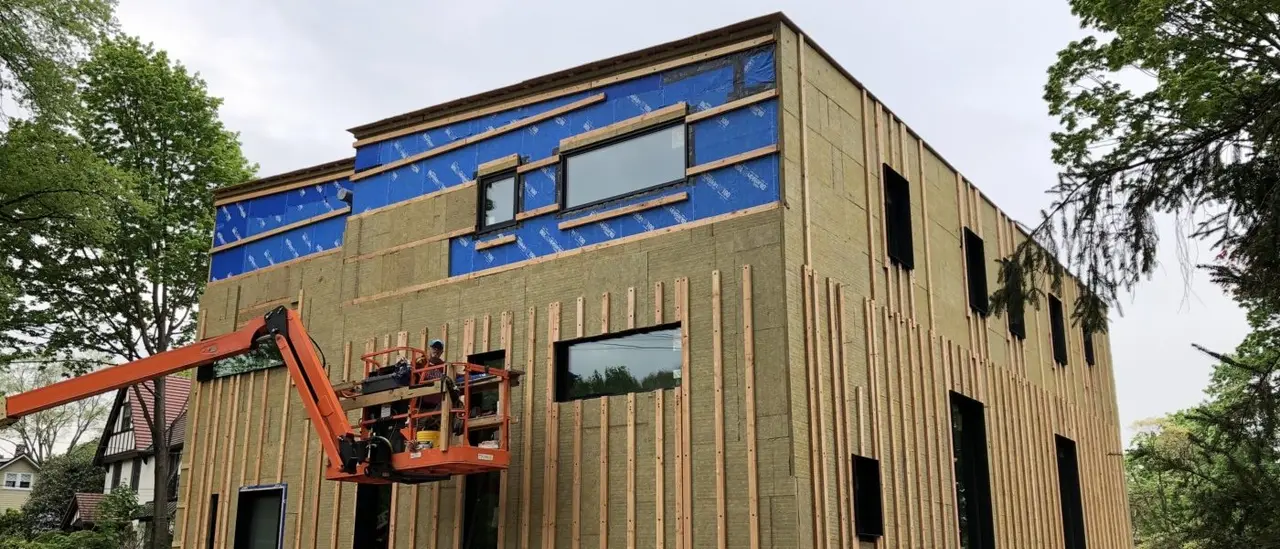The Okanagan Valley, known for its pristine landscapes and vibrant communities, is now at the forefront of sustainable construction thanks to the Step Code. This progressive framework is not just a set of guidelines but a transformative force, leading the charge towards more energy-efficient and environmentally friendly buildings. Discover how the Step Code is not only changing the face of new constructions but also setting a precedent for the future of building in the Okanagan and beyond.
Understanding the Step Code
The Step Code, a pivotal element of British Columbia’s strategy to enhance building sustainability & efficiency, serves as a performance-based approach unlike traditional prescriptive methods. It outlines a series of measurable, performance-based energy efficiency requirements for new constructions, thereby encouraging a deeper integration of green practices in the Okanagan Valley’s building sector. By setting clear targets, the Step Code aims to make all new buildings net-zero energy ready by 2032, a goal that aligns with broader environmental objectives and emphasizes the region’s commitment to sustainability.
This innovative policy is structured into a series of steps, each representing an increasing level of energy efficiency. Builders and developers in the Okanagan Valley are thereby incentivized to adopt more energy-efficient designs and technologies, pushing the envelope of what’s possible in sustainable construction. The progressive nature of the Step Code enables flexibility, allowing for creative solutions tailored to the unique needs and conditions of each project, which is particularly important in a region as ecologically diverse as the Okanagan.
The Impact of the Step Code on New Construction
The introduction of the Step Code has significantly shifted the landscape of new construction in the Okanagan Valley. Builders and architects now prioritize energy efficiency from the earliest design stages, embedding sustainability into the very fabric of new buildings. This forward-thinking approach not only enhances the building’s performance but also its long-term value, making it a win-win for both the environment and homeowners. Moreover, the focus on energy efficiency is fostering innovation in construction techniques and materials, setting new standards in the industry.
Step Code Requirements and Compliance
Adhering to the Step Code’s requirements involves a comprehensive understanding of its performance metrics, which emphasize energy conservation and efficiency. Compliance is demonstrated through detailed energy modeling and on-site testing, ensuring that each new building meets the designated energy performance level. For many in the Okanagan Valley’s construction sector, this has necessitated a shift towards more collaborative approaches to building design and construction, integrating the expertise of architects, engineers, and energy advisors from the project’s outset.
The challenge of meeting these stringent requirements is paralleled by the government’s support through incentives and resources, aimed at smoothing the transition for builders and developers. Training sessions, guides, and financial incentives are part of a broader strategy to foster a knowledgeable and skilled workforce, capable of bringing the Step Code’s vision to life across the Okanagan Valley.
Benefits of the Step Code for the Okanagan Valley
Embracing the Step Code translates into a multitude of benefits, from reduced greenhouse gas emissions to enhanced indoor air quality and comfort for residents. Energy-efficient buildings contribute to a healthier environment, cutting down on the demand for Non-renewable Sourced Energy (such as coal, natural gas, & oil) and reducing our carbon footprint. Additionally, these buildings offer lower utility bills for homeowners, creating long-term savings and making energy-efficient living more accessible to a wider audience.
Challenges and Solutions in Implementing the Step Code
Implementing the Step Code has not been without its challenges, particularly around the initial costs and the learning curve associated with new technologies and practices. However, solutions are emerging as the sector adapts. Builders are leveraging economies of scale, and manufacturers are developing more affordable energy-efficient materials and systems. Furthermore, collaboration across the industry is leading to more effective and innovative approaches to construction, helping to overcome these hurdles and driving forward the adoption of the Step Code.
The Future of Building in the Okanagan with the Step Code
Looking ahead, the Step Code is poised to redefine the standard for construction in the Okanagan Valley and beyond. As more builders and developers gain experience and expertise in creating energy-efficient buildings, the benefits of the Step Code will multiply, leading to a more sustainable and resilient construction sector. The drive towards net-zero energy buildings is expected to accelerate, marking a significant stride towards environmental stewardess and economic development in BC, making it a model for sustainable living in the 21st century.
Paving the Way for a Sustainable Future
As we’ve seen, the Step Code is more than just a set of building requirements; it’s a path towards a sustainable future, deeply influencing how homes and buildings are constructed in the Okanagan Valley, & BC. Its impact extends beyond energy savings, touching on aspects of comfort, durability, and even the real estate market’s dynamics. As the Okanagan continues to grow, the principles of the Step Code ensure that this development is in harmony with our environmental goals, shaping a future where eco-friendly and energy-efficient homes become the standard, not the exception.


